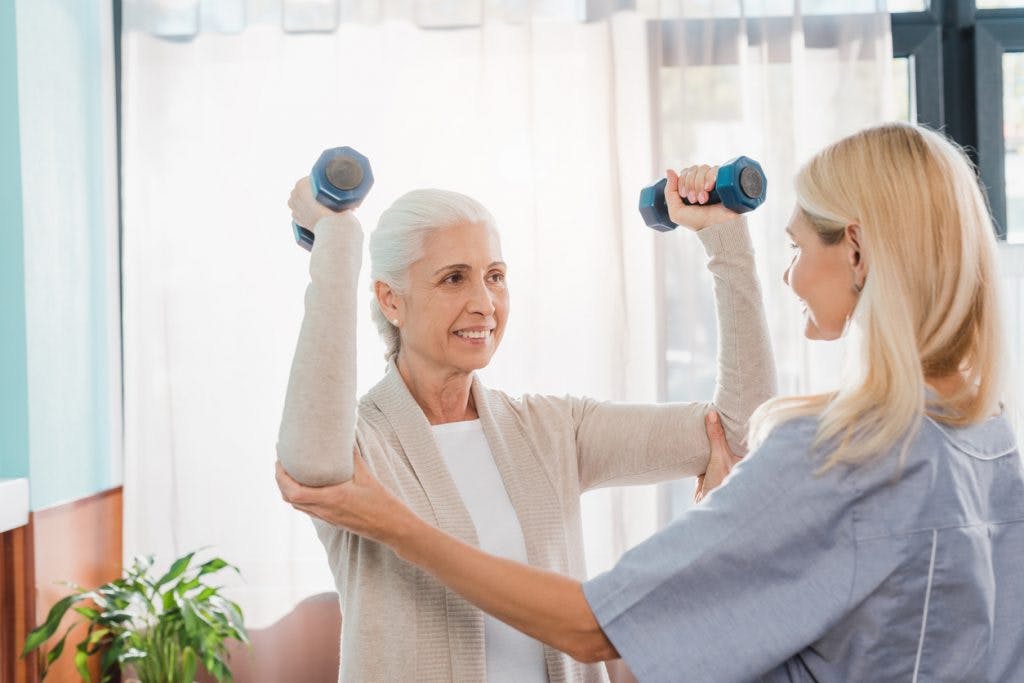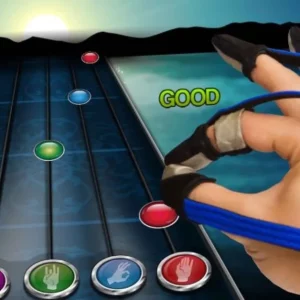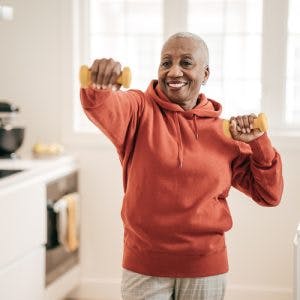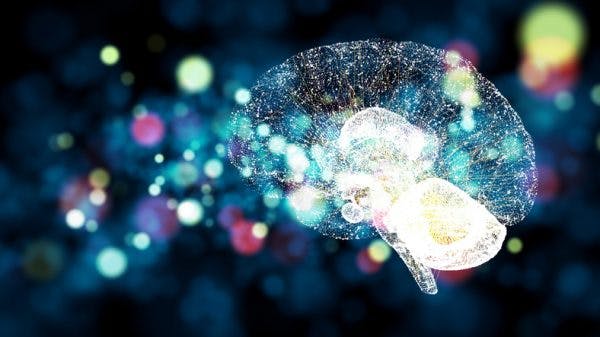According to widespread research, around 70% of stroke survivors will experience arm weakness. Thankfully, there are many effective methods for regaining arm movement after stroke. The most effective method for you, however, depends on many different factors.
Regaining mobility after a stroke works differently for everyone based on your unique symptoms and abilities. Whether you lost partial movement or struggle with post-stroke paralysis, rehabilitation methods can be adapted to all ability levels to help you regain arm use and improve quality of life.
Experimentation is key, so this article will explore the best practices for regaining arm movement after stroke. We hope it inspires you to take action.
Use the links below to jump straight to any section:
- Why Does Arm Weakness or Paralysis Occur?
- How to Regain Use of Your Arm After Stroke
- Methods for Regaining Arm Movement After Stroke
- How Long Does It Take to Regain Arm Movement?
Why Does Arm Weakness or Paralysis Occur After Stroke?
In order to learn how to regain use of your arm after stroke, it helps to understand what causes difficulty with arm mobility to begin with. All voluntary movement in the body is initiated from the brain. Different areas of the brain tell your muscles to move by sending signals via neural pathways, resulting in muscle contraction.
A stroke is a neurological event that compromises the supply of blood in the brain, which causes damage to the neural pathways in the affected area(s). Therefore, when a stroke impacts the area of the brain that controls arm movement, it can cause weakness or paralysis in the arm. Muscle atrophy (loss of muscle mass) may occur if a survivor stops using their affected arm but, aside from that, the arm muscles themselves are unaffected.
Thus, recovering arm movement after stroke revolves around healing the brain and rebuilding neural pathways. This is possible through neuroplasticity, your brain’s natural ability to rewire itself and learn new skills or re-learn old skills after a neurological event like stroke.
How to Regain Use of Your Arm After Stroke
Although you cannot “cure” brain damage, the brain is resilient and function can be recovered. This is because neuroplasticity allows healthy areas of the brain to take on lost functions. For example, in extreme cases where someone has a hemispherectomy (removal of half the brain), neuroplasticity allows the remaining half of the brain to compensate and function as the whole.
The brain’s neuroplasticity occurs based on your experiences and practices. To regain use of your arm after stroke, you need to encourage your brain to adapt through repetitive practice. When we practice a skill, specific neural pathways in our brain are activated. Initially these neural pathways might be weak, but they can become stronger through repetition.
For this reason, the best way to regain arm movement after stroke is by practicing arm rehabilitation exercises consistently. Practice helps strengthen the neural pathways in your brain that tell your arm muscles when and how to move. Although movement may feel difficult or clumsy at first, continued practice will improve arm mobility and function over time.
Methods for Regaining Arm Movement After Stroke
There are many different forms of therapy that can be used to regain use of the arm after stroke. Common threads among these methods include practice, repetition, and movement as these are the keys to stroke recovery.
It is also important to work closely with your physical and/or occupational therapist as they are movement experts and can customize a rehab plan to maximize your recovery. Here are some methods your therapist may recommend for regaining arm use after stroke:
Active Arm Exercises
As previously mentioned, practicing arm rehabilitation exercises is the best way to regain arm movement after stroke as this stimulates the brain and encourages neuroplasticity. Active arm exercises refer to tasks where the arm muscles are engaged and movement is voluntary (intentional).
While creating any kind of rehabilitation exercise regimen, it’s important to find balance. Aim to feel challenged but not frustrated by your exercise program. Additionally, remember to pay attention to the quality of your movements. While the quantity of exercises helps to form and solidify neural pathways, practicing good quality movement patterns is essential to recovering optimal arm mobility.
Following stroke, some survivors may have little to no active movement the arm. In this case the next option will be a more suitable start for your rehab program.
Passive Arm Exercises
Neuroplasticity works no matter how severely your arm mobility has been affected. What matters is that you are stimulating the brain by moving your arm. Therefore, if your affected arm has no movement, you can exercise passively.
Passive exercises can be performed independently by using your non-affected arm to move your affected arm. Additionally, having a therapist or trained caregiver move your affected arm for you is another way to incorporate passive exercise into your routine.
Passive exercises help stimulate the brain and activate neuroplasticity. With consistent practice, some survivors may be able to regain arm movement after stroke this way, although this takes time and dedication. For instance, you may start to see twitches in your arm after a few months of practice. This can be a sign that your arm is starting to “wake up.” Hopefully progress like this helps motivate you to keep pursuing recovery.
Even if you do not see results right away, rest assured that passive exercise still has tremendous benefits. It’s important to move flaccid (paralyzed) limbs through their range-of-motion to help prevent muscle shortening and joint stiffness, reducing the risk of developing contractures.
This video with popular YouTube physical therapists Bob and Brad reviews several at-home exercises to help gain arm movement after stroke. Note that Bob and Brad emphasize the importance of repetition in the beginning of the video. Regaining arm movement after stroke is all about establishing new neural pathways in the brain.
Mental Practice
Visualizing yourself practicing a skill helps activate neuroplasticity just as physically practicing does. This is why professional athletes spend time visualizing themselves playing their sport to improve their game.
Mental practice has positive implications for stroke survivors with paralysis. Even if you can’t move your arm actively, you can still visualize it and engage neuroplasticity. Combining mental practice with physical practice leads to better results than just mental practice alone. Try spending 5-10 minutes visualizing your arm exercises before actually doing them.
Therapists may also recommend mirror therapy to help survivors better visualize their affected limb moving. This technique involves placing a mirror at the center of the body, facing the non-affected limb and covering the affected limb. When a survivor working to regain arm mobility moves their non-affected arm, the mirror reflects an image that appears to be their affected arm moving. This “tricks” the brain into visualizing the affected arm performing exercises.
FitMi Home Therapy

FitMi home therapy is a high-tech, interactive exercise device. It’s designed to help you achieve high repetition of various rehabilitation exercises, including exercises for the arm. Many stroke survivors have used it to regain movement in their arm after stroke, even if they started with no movement. (See a success story here.)
The primary benefit of using FitMi is the motivation to intensify rehabilitation with highly repetitive exercises. Some other benefits of using the device include diversified feedback (such as auditory and haptic feedback) which provides even more stimulation to the brain. FitMi also adjusts your exercise program to suit your ability level. That way you stay challenged but not frustrated.
Botox Injections
Spasticity is a condition characterized by muscle stiffness or spasm, and it’s a common secondary effect following stroke. Spasticity can negatively affect mobility, performance of daily activities, and overall quality of life.
Arm rehabilitation exercise helps reduce spasticity, but sometimes spasticity itself gets in the way of exercise. When spasticity is severe, nerve blockers like Botox can be used to temporarily reduce spasticity enough to practice rehab exercises. While the effects eventually wear off, requiring repeat treatments, this can be a great adjunct to exercise and help you regain arm movement after stroke.
By decreasing spasticity, Botox can create a window of opportunity to activate neuroplasticity and gain range of motion. With time and consistent practice, arm spasticity can decrease and the mobility improvements you’ve made will carry over and continue to progress through further rehabilitation.
Additionally, arm splints can be used to help maintain gains in arm mobility following exercise and botox injections. To give you more information, we’ve linked an article for hand splints and gloves to help increase mobility and decrease spasticity after stroke. Your therapist can also give you recommendations on an optimal splint for your specific needs.
Constraint-Induced Movement Therapy
Another rehabilitation method used for regaining arm movement after stroke is constraint-induced movement therapy. This technique involves restricting your non-affected arm to encourage increased use of your affected arm. One way to do this is to place an oven mitt over your non-affected hand while performing an activity to encourage you to use your affected arm and hand.
This type of therapy is proven to be effective, but it can also be frustrating and inefficient as you cannot use your non-affected side. Remember that therapy should be challenging but not frustrating. CIMT is considered most effective when used for the majority of the day in conjunction with intensive therapy, but start by trying it for shorter periods of time and work your way up. Be sure to take breaks if you find yourself getting too frustrated.
Electrical Stimulation
Electrical stimulation is another research-supported arm rehabilitation technique to help gain arm movement after stroke. Electrical stimulation is applied through electrodes on the skin and causes the intended muscles to contract, resulting in arm movement. Studies have shown that pairing electrical stimulation with rehabilitation exercise leads to better results than just electrical stimulation alone.
Consult with your therapist before attempting electrical stimulation independently. Your therapist can show you the right areas to place the electrodes and how to use the machine safely. Those with affected sensation in their arm should be especially careful using electrical stimulation, checking the skin frequently for any redness or irritation.
Arm Pedaling
An arm pedaler or cycle is a great piece of stroke rehab equipment for arm mobility because the movement is bilateral, or involves both sides. Arm pedaling allows you to use your non-affected arm to assist your affected arm, which is therapeutic during rehabilitation.
Bilateral training like this is particularly beneficial for stroke survivors starting with limited arm mobility. Pedaling with the arms can help gain arm movement after stroke by increasing range of motion and encouraging muscle activation through neuroplasticity. Although you are relying on your non-affected side to initiate movement, both sides are still moving, which helps stimulate the brain.
Weight-Bearing Exercise
Another way to encourage muscle activation and gain arm movement after stroke is through weight-bearing exercise. This can be done while sitting or standing and involves placing your affected forearm or hand on a surface and gradually putting some of your weight through it. This helps to provide input from your arm to your brain to rewire their connection through neuroplasticity.
Weight-bearing can be easily incorporated into many of your normal daily activities. For example, try leaning on your affected arm while it is on the countertop during teeth brushing, on the armrest of your chair while chatting, or on the table while you’re playing cards. By doing this, you can be activating neuroplasticity and promoting recovery throughout your daily routine to help you regain arm use after stroke.
How Long Does It Take to Regain Arm Movement After Stroke?
Every stroke is different and therefore every recovery will be unique. It’s impossible to determine any single person’s stroke recovery timeline. The results you see will depend on a variety of factors such as the size of your stroke and the area of the brain affected by stroke.
Some factors are out of your control, such as whether your stroke was mild or massive; but other factors are in your control, such as the intensity of rehabilitation. When you stick with something consistently and put in the reps, the brain will respond positively. For example, one stroke survivor regained movement in his paralyzed arm within three weeks of daily exercise with FitMi home therapy.
Not everyone will experience the same results. Therefore, instead of focusing on how long recovery will take, focus on finding the right rehabilitation method for you and sticking with it. Consistency is critical to improve your chances of recovery and see results as quickly as possible.
Regaining Arm Use After Stroke
Gentle rehabilitation therapies such as passive exercise and mental practice are great starting points if you have no movement in your affected arm. Other therapies that encourage high repetition, such as FitMi home therapy, help accelerate results by intensifying rehabilitation.
Regaining arm movement after stroke is all about finding the right rehabilitation method that works for you. Remember to choose something that’s motivating but not frustrating and you’ll be on the road to recovery.










